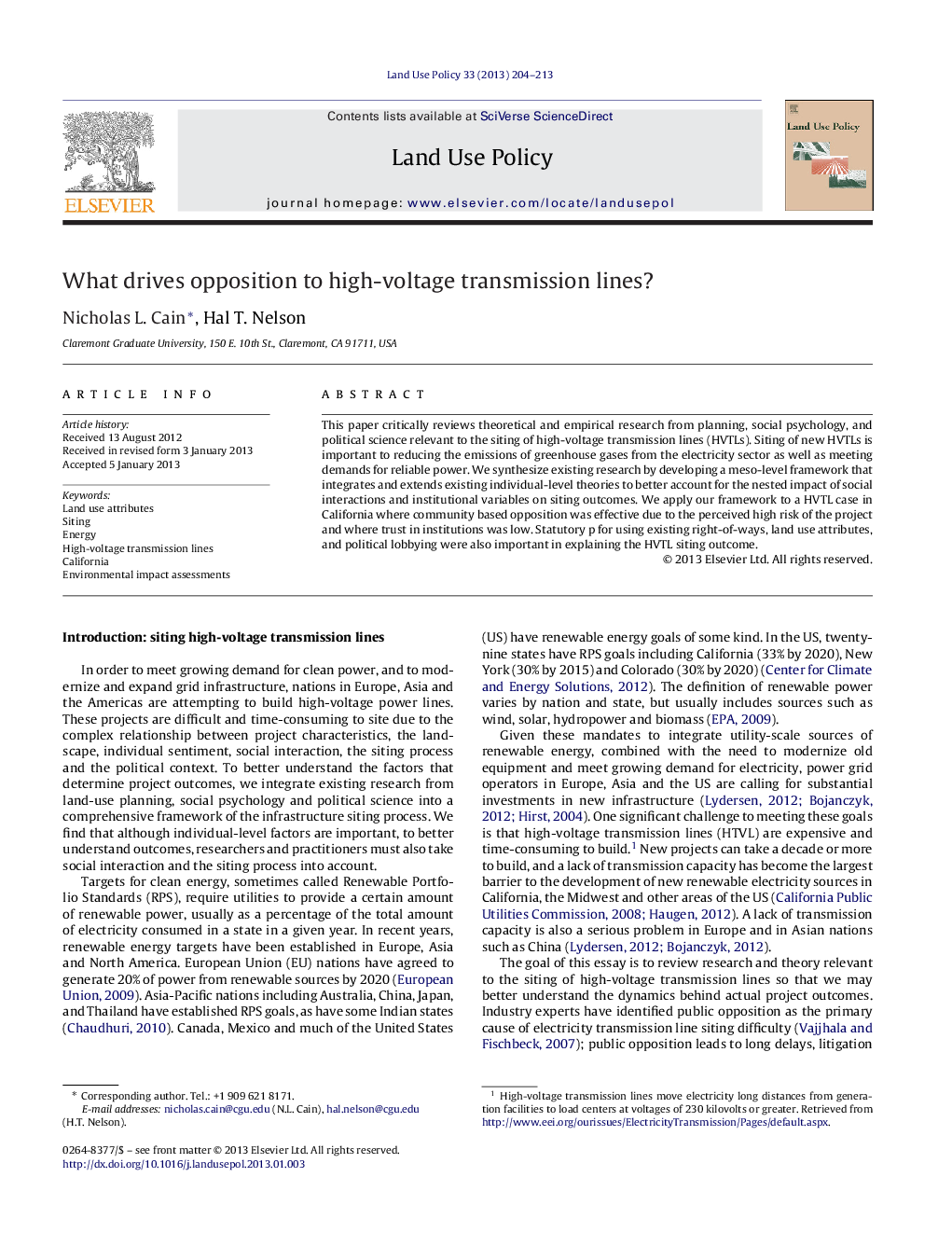| Article ID | Journal | Published Year | Pages | File Type |
|---|---|---|---|---|
| 93145 | Land Use Policy | 2013 | 10 Pages |
This paper critically reviews theoretical and empirical research from planning, social psychology, and political science relevant to the siting of high-voltage transmission lines (HVTLs). Siting of new HVTLs is important to reducing the emissions of greenhouse gases from the electricity sector as well as meeting demands for reliable power. We synthesize existing research by developing a meso-level framework that integrates and extends existing individual-level theories to better account for the nested impact of social interactions and institutional variables on siting outcomes. We apply our framework to a HVTL case in California where community based opposition was effective due to the perceived high risk of the project and where trust in institutions was low. Statutory p for using existing right-of-ways, land use attributes, and political lobbying were also important in explaining the HVTL siting outcome.
Graphical abstractFigure optionsDownload full-size imageDownload as PowerPoint slideHighlights► We review and critique existing research on the siting of high voltage transmission lines and highlight several gaps in the research literature. ► We extend and integrate the literature with the introduction of a meso-level framework that better accounts for factors at the individual, social and institutional levels of analysis. ► We then test our framework using a single case of high-voltage transmission line siting in California.
